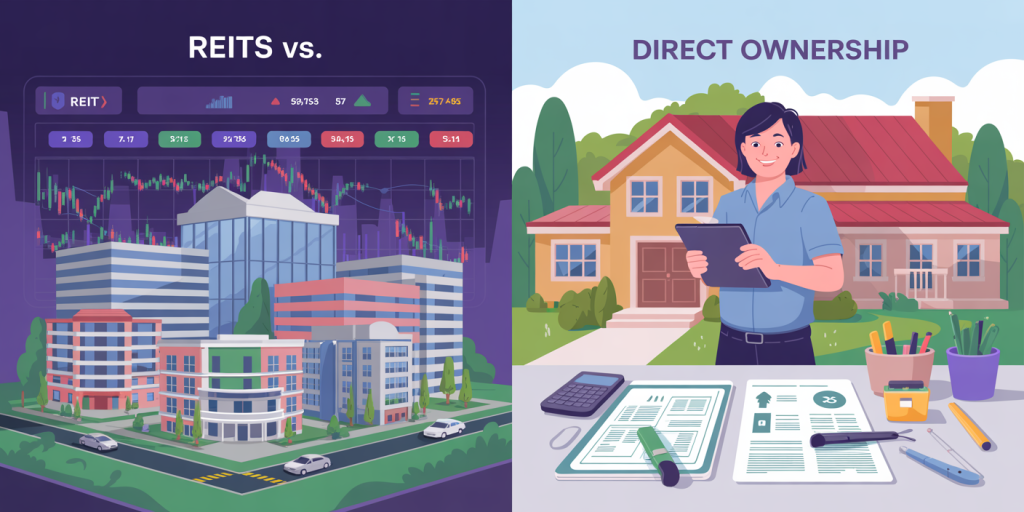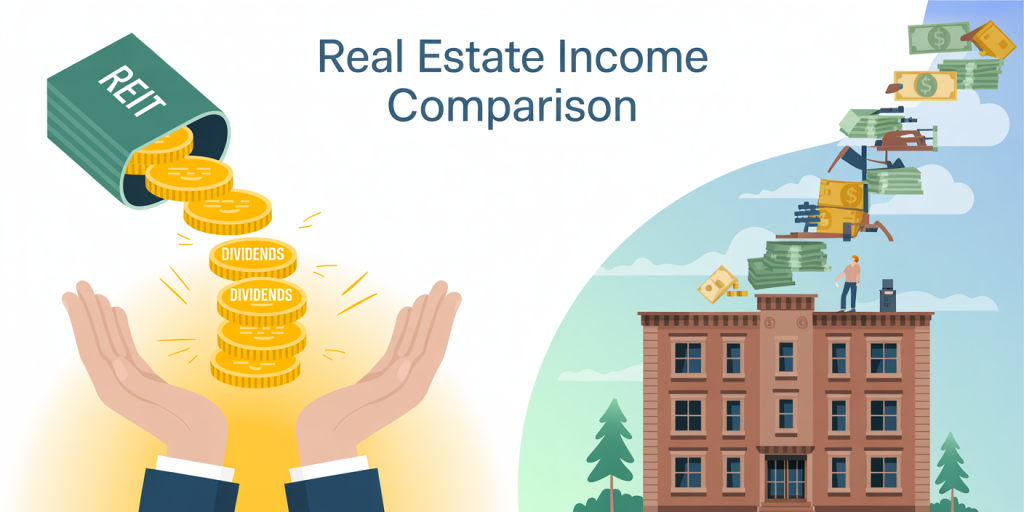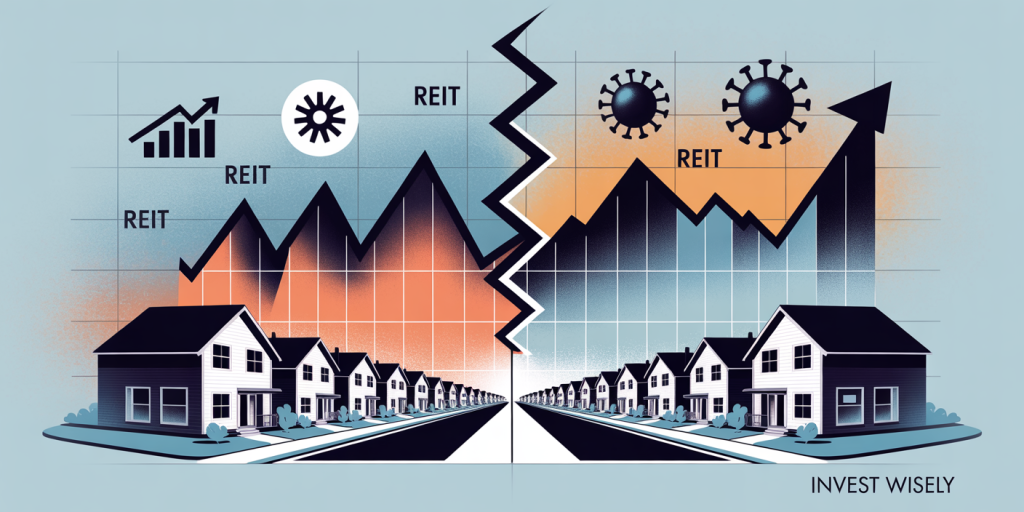REITs vs. Direct Real Estate Investment: Pros and Cons
Anúncios
Navigating the world of real estate investment can be challenging, especially when deciding between Real Estate Investment Trusts (REITs) and direct property ownership. Both avenues offer unique benefits and drawbacks depending on an investor’s goals, risk tolerance, and capital availability. Real estate remains a cornerstone of wealth building, and understanding these two distinct investment methods can help individuals diversify their portfolios effectively. This article explores the key differences between REITs and direct real estate investments while delving into their pros and cons to aid investors in making informed decisions.
Contextualizing Real Estate Investment
Anúncios
Real estate investment has traditionally been regarded as a stable, income-generating asset class. According to the National Association of Realtors, 65% of American households own their homes, highlighting the appeal and familiarity of real estate assets. Over the past decades, investors globally have sought property not just for personal use but as a vehicle for capital appreciation and passive income.
In parallel, Real Estate Investment Trusts (REITs) emerged as an accessible and liquid way to invest in real estate without physically owning properties. REITs are companies that own, operate, or finance income-producing real estate. The REIT model allows investors to buy shares resembling stocks, which can be traded on exchanges like the NYSE or NASDAQ. In 2023, the total market capitalization of U.S. REITs exceeded $1.4 trillion, reflecting their growing popularity.

Understanding the practical advantages and disadvantages of each approach is critical for selecting the path aligned with an investor’s financial and lifestyle objectives.
Accessibility and Capital Requirements
One of the most striking differences between REITs and direct real estate investment lies in the accessibility and capital commitment required.
Direct real estate typically demands a substantial upfront investment. For example, purchasing a single-family rental home in a city like Austin, Texas, might require a down payment of $50,000 to $100,000, excluding maintenance costs and property taxes. This capital lock-in can limit diversification since most individual investors can only afford a handful of properties.
In contrast, REITs offer entry points as low as the price of a single share, often under $100 per share. This low barrier allows investors to build diversified portfolios by purchasing shares in different REITs that specialize in residential, commercial, industrial, or healthcare real estate. According to a 2022 survey by Fidelity Investments, 43% of millennial investors favored REITs due to ease of access and lower capital requirements.
| Feature | REITs | Direct Real Estate |
|---|---|---|
| Minimum Capital Requirement | Low (investment starts at <$100) | High (typically $50,000+) |
| Liquidity | High (shares traded on exchanges) | Low (properties can take months to sell) |
| Diversification | Easy to diversify across sectors | Limited by capital |
Income Generation and Cash Flow Stability
Both REITs and direct real estate provide income streams, primarily through rent, but the nature and reliability of cash flow differ.
REITs are mandated by law to distribute at least 90% of their taxable income to shareholders as dividends. In 2023, the average dividend yield for equity REITs in the U.S. hovered around 4.2%, according to Nareit. This steady income is appealing to investors seeking passive income without the hassle of property management. Also, since REITs pool funds from various properties, risks from tenant vacancies or localized downturns tend to be diluted.
On the other hand, direct real estate investors collect rent directly from tenants. The gross rental yield for residential properties varies widely but often ranges between 5% to 8% annually, depending on market conditions. For example, an investor owning a multifamily building in Atlanta might achieve a 7% net cash flow yield after accounting for expenses. However, direct landlords bear operational risks, including vacancies, tenant defaults, unexpected repairs, and property taxes, which can lead to income volatility.

Furthermore, direct ownership allows for active management to enhance cash flow—such as upgrading units or renegotiating leases—which is less feasible with REIT shares.
| Aspect | REITs | Direct Real Estate |
|---|---|---|
| Dividend Yield (2023) | ~4.2% average return | Rent yields 5-8%, variable with property |
| Income Stability | Generally stable due to diversified portfolios | Potentially volatile; depends on management |
| Control over income | Limited; dividends are declared by trustees | Full control over rental rates and costs |
Management and Operations Responsibility
Investing directly in real estate requires active involvement unless the investor hires a property management company, which reduces net returns but alleviates daily management burdens.
Managing tenants, maintenance requests, marketing vacancies, and legal compliance are time-consuming activities inherent to direct ownership. For example, a 2021 survey by Buildium found that landlords spend an average of 8-10 hours weekly on property management duties. In contrast, REIT shareholders do not face such responsibilities, as professional management teams handle acquisitions, leasing, building maintenance, and regulatory compliance.
However, some investors prefer the autonomy that comes with direct real estate. They can implement renovation strategies, choose tenants, and customize their portfolios to suit personal preferences. Also, successful hands-on management can result in value creation beyond straightforward rent collection.
Risk Exposure and Market Sensitivity
Real estate investments are not risk-free; however, the risk exposure profiles starkly differ between REITs and direct holdings.
REITs, being publicly traded, are subject to stock market fluctuations and broader economic trends. During times of economic uncertainty, REIT prices can be volatile, reflecting investor sentiment about interest rates, inflation, and sector-specific risks. For example, during the COVID-19 pandemic in 2020, retail and hospitality REITs experienced steep share price declines of over 30%, despite the long-term value of their underlying properties.
Direct real estate investment, while less liquid, tends to be more insulated from stock market swings. Property values are influenced more by local supply-demand dynamics, macroeconomic trends, and neighborhood characteristics. However, during economic recessions, vacancy rates may rise, and property prices drop, impacting cash flow and capital appreciation. For instance, during the 2008 financial crisis, many owner-occupied and rental properties saw substantial depreciation across U.S. housing markets.

| Risk Factor | REITs | Direct Real Estate |
|---|---|---|
| Market Volatility | High; tied to stock market fluctuations | Moderate; localized market impact |
| Interest Rate Sensitivity | High; rising rates can depress REIT prices | Moderate; impacts mortgage rates and financing costs |
| Operational Risks | Managed by professionals | Managed by owner or hired managers |
Tax Implications and Regulatory Considerations
Tax treatment is a pivotal factor influencing the choice between REITs and direct ownership.
REIT dividends are usually taxed as ordinary income, which can result in higher tax rates compared to qualified dividends or long-term capital gains on stocks. Investors in REITs should also be aware of the potential for double taxation at the corporate and individual levels if they invest in non-traded REITs. Nevertheless, REIT investors benefit from pass-through taxation, avoiding corporate income tax if REITs comply with distribution rules.
Conversely, direct real estate investors enjoy a range of tax benefits. Mortgage interest and property depreciation are deductible expenses that can shield rental income from taxation. Capital gains on property sales can be deferred through 1031 exchanges, allowing reinvestment without immediate tax liability. Additionally, owning rental properties offers opportunities for estate planning through stepped-up basis provisions.
Tax regulations can be complex and vary by jurisdiction, so consulting tax professionals is advisable for both investment types.
Future Perspectives in Real Estate Investing
The landscape of real estate investment continues evolving, influenced by technological advances, demographic shifts, and economic cycles. As of 2024, REITs show promising growth potential, especially in niche sectors like data centers, logistics, and healthcare properties, fueled by digital transformation and e-commerce expansion. Analysts from JLL project that industrial and data center REITs will outperform traditional office and retail sectors in the near term.
Direct real estate investment is also adapting, with emerging trends such as short-term rental platforms (e.g., Airbnb) providing new income models. Additionally, sustainable and energy-efficient properties are gaining traction, appealing both to tenants and investors attuned to ESG (Environmental, Social, and Governance) principles.
Hybrid strategies combining both REITs and direct ownership are becoming popular, allowing investors to balance liquidity, diversification, and control. For instance, an investor might hold residential rental properties for stable cash flow while investing in REITs to capitalize on broader market opportunities with lower capital commitment.
Technological innovations like blockchain and tokenization propose to revolutionize property ownership by facilitating fractional ownership and secondary markets, potentially lowering entry barriers and enhancing liquidity for direct real estate fractional investments.
In summary, while REITs and direct real estate investing have distinct profiles, the synergies between the two and the ongoing evolution of the real estate sector will provide diverse opportunities for investors across all experience levels and capital capacities.
—
References: National Association of Realtors (2023). Profile of Home Buyers and Sellers. Nareit (2023). Real Estate Market Outlook. Fidelity Investments (2022). Millennial Investor Survey. Buildium (2021). Landlord Time Management Report. JLL (2024). Real Estate Sector Forecast. U.S. Internal Revenue Service (2023). Real Estate Tax Guide.
